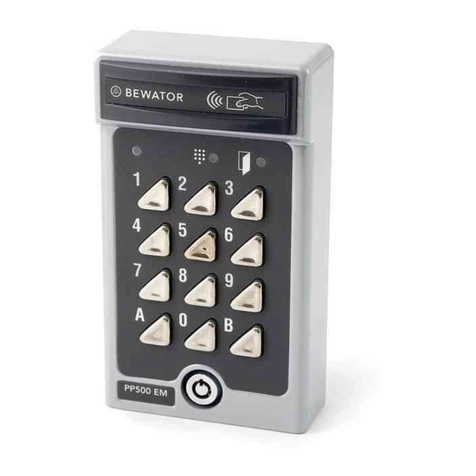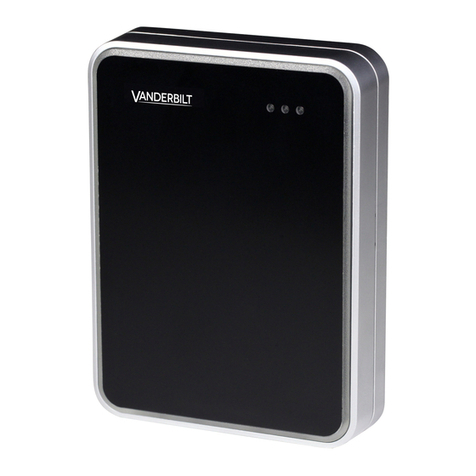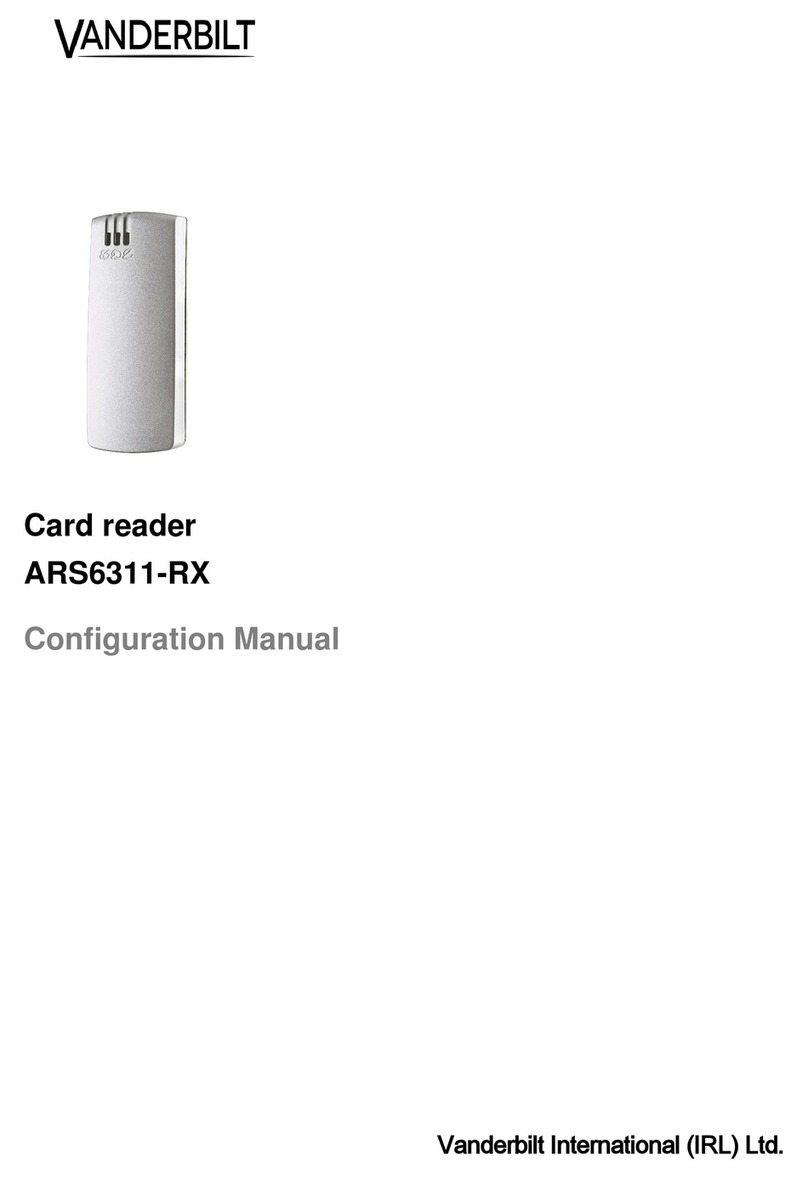2 Technical data
VR20M-MF Mifare card reader
standard
VR50M-MF Mifare card reader
standard with keypad
Protocol OSDP or Wiegand OSDP or Wiegand
Interface to controller RS485 or Wiegand RS485 or Wiegand
Operating voltage 8.5 – 30.0 VDC 8.5 – 30.0 VDC
Power consumption DC 12V 50mA Peak 150mA
DC 24V 35mA Peak 100mA
DC 12V 50mA Peak 150mA
DC 24V 35mA Peak 100mA
Tamper protection Yes Yes
Card technology Mifare Mifare
Card compatibility
Mifare Classic
Mifare Plus
Mifare DESfire EV1/ EV2
Mifare Classic
Mifare Plus
Mifare DESfire EV1/ EV2
Reading distance
Mifare Classic-up to 6 cm
Mifare Plus-up to 6 cm
Mifare DESfire EV1/ EV2-the
card must be held to the reader
Mifare Classic-up to 6 cm
Mifare Plus-up to 6 cm
Mifare DESfire EV1/ EV2-the
card must be held to the reader
Indicators
3 x LED (red/yellow/green)
1 x Buzzer
Multicolour light frame
3 x LED (red/yellow/green)
1 x Buzzer
Multicolour light frame
Keypad No Yes
Operating temperature - 40°C to + 70°C - 40°C to + 70°C
IP rating IP55 IP55
IK class 08 08
Housing Zinc casted metal bezel with
polycarbonate plastic front
Zinc casted metal bezel with
polycarbonate plastic front
Color Black, matt chrome Black, matt chrome
Dimensions (WxHxD) mm Surface mounted: 48 x 129 x 22 Surface mounted: 48 x 129 x 24
Approvals CE 2014/53/EU CE 2014/53/EU
© Vanderbilt 2018 5 A-100410
21.06.2018































